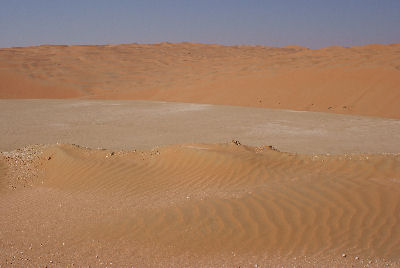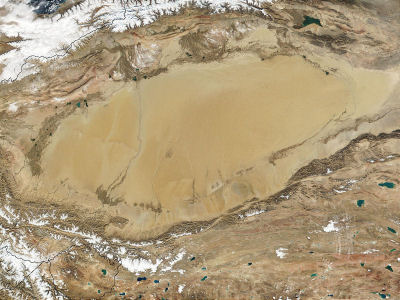1. Soil Degradation
Desertification
Desertification is encountered in arid, semi-arid and dry sub-humid areas, where water is not available at large quantities. Drought is a major factor in the progression of desertification, but drought alone is not sufficient to drive the phenomenon.
The main causes of desertification are related to human activities. Of those, the most important are overgrazing and deforestation, which lead to loss of vegetation, and also intensive agriculture, incorrect fertilisation and irrigation methods, which increase soil salinity. Climate change, also plays an important part in the progression of desertification by increasing and intesifying drought periods.

Source: Wikimedia Commons
The global community has become aware of the problem and is taking action. In 1977, the United Nations Condference on Desertification (UNCOD) in Nairobi, Kenya, addressed the problem of desertification as a worldwide issue for the first time and a Plan of Action to Combat Desertification (PACD) was adopted.
In 1992 at the United Nations Conference on Environment and Development (UNCED) in Rio de Janeiro, Brazil, the Earth Summit and Agenda 21 called on the UN General Assembly to set up an inter-governmental committee to prepare for a legally binding instrument that addresses the problem of desertification.
The United Nations Convention to Combat Desertification (UNCCD) (www.unccd.int) was adopted in Paris on June 17, 1994, which became the world day to combat desertification. The year 2006 was declared by the UN as the "International Year to Combat Desertification".
Question: How many of the 6 billion people on this planet are dependent on fragile ecosystems
in arid and semi-arid areas?
- 500 million
- 1 billion
- 2 billion
- 3 billion
Large deserts on our planet
Deserts are large expanses of areas covered with sand. Even though very little life is supported in the deserts, many people still live around the edges of deserts.
In the picture above, the Taklimakan Desert in northwest China, is such an example. This desert is located between two mountain ranges and covers approximately 320,000 square kilometers in the Xinjiang region of China. In the images above, the desert is visible, along with the mountain ranges on the north and south. Even though farmers are living on the edges of the desert, the moving sand dunes and the expansion of desertification is a serious problem for them.
Question: In which continents are the following deserts and which one is the largest?
- Great Victoria Basin
- Arabian Desert
- Gobi Desert
- Great Basin Desert
- Patagonia Desert
- Kalahari Desert
- Sahara Desert

